The Role of Stansted Airport in Ecosystem Restoration

Stansted Airport's Environmental Policies
Stansted Airport has been making significant strides in its environmental policies, playing a crucial role in ecosystem restoration. The airport has implemented a series of measures to reduce its carbon footprint and promote sustainability. These include the use of renewable energy sources, waste management systems, and water conservation strategies. The airport is also committed to reducing noise pollution and improving air quality. Furthermore, Stansted has been actively involved in local biodiversity projects, aiming to protect and enhance the surrounding natural habitats. This includes the creation of new woodland areas and the preservation of existing ones. The airport's environmental policies not only demonstrate its commitment to sustainability but also its role in contributing to ecosystem restoration. Stansted Airport is setting a commendable example for other airports worldwide, proving that it is possible to balance operational efficiency with environmental responsibility.
Ecosystem Restoration Initiatives at Stansted Airport
Stansted Airport has taken a proactive role in ecosystem restoration, demonstrating a commitment to environmental sustainability. The airport has initiated several projects aimed at preserving and enhancing the local biodiversity. One such initiative is the creation of a new 2.5-hectare wetland, providing a habitat for a variety of species, including water voles and amphibians. The airport also manages a 16-hectare ancient woodland, ensuring its preservation and protection. Additionally, Stansted has implemented a bird management plan to protect bird species and reduce the risk of bird strikes. The airport's efforts extend to energy conservation as well, with a focus on reducing carbon emissions. These initiatives highlight Stansted Airport's dedication to environmental stewardship, setting a commendable example for other airports worldwide. The airport's role in ecosystem restoration is a testament to its commitment to sustainable practices, proving that industrial progress and environmental conservation can coexist harmonically.
Stansted Airport's Impact on Local Ecosystem
Stansted Airport, one of the busiest airports in the UK, has been making significant strides in its commitment to environmental sustainability. The airport's management has been keen on reducing its carbon footprint and mitigating its impact on the local ecosystem. The airport has implemented several initiatives aimed at ecosystem restoration. These include the creation of new habitats for local wildlife, the planting of thousands of trees and shrubs, and the installation of bird and bat boxes. The airport also has a comprehensive waste management system that ensures minimal waste ends up in landfills. Furthermore, Stansted has been working closely with local communities and environmental groups to ensure its operations do not disrupt the local ecosystem. These efforts have not only helped to restore the local ecosystem but also enhanced biodiversity around the airport. Stansted Airport's commitment to environmental sustainability serves as a model for other airports worldwide.
Community Engagement in Ecosystem Restoration
Stansted Airport has taken a significant role in ecosystem restoration, demonstrating a commitment to environmental sustainability. The airport has engaged the local community in its efforts, fostering a sense of shared responsibility for the environment. This community engagement has taken various forms, including educational programs, volunteer opportunities, and partnerships with local environmental organizations. The airport's restoration initiatives have focused on preserving and enhancing local biodiversity. They have undertaken projects to restore habitats, plant native species, and protect endangered wildlife. These efforts have not only helped to offset the environmental impact of the airport's operations but have also provided a valuable educational resource for the community. Stansted Airport's approach to ecosystem restoration illustrates the potential for businesses to contribute positively to their local environments. By engaging the community, they have fostered a greater understanding and appreciation of the importance of environmental sustainability. This model of community engagement in ecosystem restoration is one that could be replicated by other businesses and organizations.
Government Regulations on Airport Ecosystem Impact
The UK government has implemented stringent regulations to mitigate the environmental impact of airports, and Stansted Airport is no exception. These regulations aim to protect the ecosystem surrounding the airport, which is often adversely affected by noise, air pollution, and habitat destruction. Stansted Airport has taken these regulations to heart, playing a significant role in ecosystem restoration. The airport has implemented several initiatives to reduce its carbon footprint and promote biodiversity. These include the use of renewable energy, waste management programs, and the creation of green spaces within the airport premises. Furthermore, Stansted has invested in noise reduction technologies and has set up noise insulation schemes for local residents. The airport also works closely with local conservation groups to protect and restore nearby habitats. This includes the planting of native species and the creation of wildlife corridors. Through these efforts, Stansted Airport is not only complying with government regulations but is also setting a benchmark for environmental responsibility in the aviation industry.
Role of Technology in Ecosystem Restoration at Stansted Airport
Stansted Airport is playing a pivotal role in ecosystem restoration, leveraging advanced technology to mitigate environmental impacts. The airport has adopted innovative solutions such as AI-powered systems to monitor and manage wildlife, ensuring minimal disruption to local ecosystems. Additionally, it uses drone technology for habitat mapping, providing precise data for effective conservation strategies. Stansted's commitment to sustainability is also evident in its use of renewable energy sources and waste management systems. The airport's green initiatives, such as the installation of solar panels and the recycling of waste water, contribute significantly to reducing its carbon footprint. Furthermore, Stansted is pioneering in using biofuels for aircraft, a move that could revolutionize the aviation industry's impact on the environment. In conclusion, Stansted Airport is setting a commendable example in ecosystem restoration. By harnessing technology, it is not only minimizing its environmental impact but also contributing to the preservation and restoration of local ecosystems.
Economic Impact of Ecosystem Restoration at Stansted Airport
Stansted Airport has taken a significant role in ecosystem restoration, demonstrating the potential economic impact of such initiatives. The airport has invested in various environmental projects, including habitat restoration and biodiversity conservation, which have not only improved the local ecosystem but also generated economic benefits. The restoration of natural habitats around the airport has attracted a variety of wildlife, enhancing the local biodiversity. This has increased the appeal of the area for tourism, leading to a boost in local businesses and job creation. Moreover, the improved ecosystem services, such as water purification and carbon sequestration, have reduced the airport's operational costs. Furthermore, Stansted's commitment to sustainability has enhanced its reputation, attracting more passengers and airlines, thus increasing its revenue. The airport's ecosystem restoration initiatives have also opened up opportunities for partnerships with environmental organizations and government bodies, leading to additional funding and support. In conclusion, Stansted Airport's role in ecosystem restoration has not only benefited the environment but also had a positive economic impact, proving that environmental sustainability and economic growth can go hand in hand.
Challenges in Ecosystem Restoration at Stansted Airport
Stansted Airport, one of the busiest airports in the UK, faces significant challenges in ecosystem restoration. The airport's expansion and operations have led to habitat destruction, air and noise pollution, and disruption of local wildlife. The airport's location, surrounded by a rich biodiversity of flora and fauna, makes the task of ecosystem restoration even more critical. The airport authorities are grappling with the challenge of balancing the need for economic growth and the imperative to protect and restore the environment. The airport's role in ecosystem restoration involves implementing sustainable practices, such as reducing carbon emissions, managing waste responsibly, and promoting biodiversity. However, the scale of the task, the constant pressure of operations, and the need for stakeholder buy-in make it a complex challenge. Despite these hurdles, Stansted Airport's commitment to ecosystem restoration is a step in the right direction towards sustainable aviation.
Success Stories of Ecosystem Restoration at Stansted Airport
Stansted Airport has been a beacon of hope in the realm of ecosystem restoration, demonstrating that industrial development and environmental conservation can coexist harmoniously. The airport's commitment to biodiversity has led to the creation of a 150-acre ecological oasis, home to a variety of flora and fauna. One of the most notable success stories is the restoration of the ancient Elsenham Wood. The airport's management team, in collaboration with local environmental groups, has worked tirelessly to remove invasive species and replant native trees, resulting in a thriving woodland habitat. Another success story is the creation of a new wetland habitat. The airport's drainage system was redesigned to create a series of ponds and reed beds, providing a sanctuary for water voles, amphibians, and a variety of bird species. These initiatives at Stansted Airport highlight the potential for airports to play a significant role in ecosystem restoration, setting a precedent for other airports worldwide to follow.
Future Plans for Ecosystem Restoration at Stansted Airport
Stansted Airport has unveiled ambitious plans for ecosystem restoration as part of its commitment to environmental sustainability. The airport aims to enhance biodiversity, reduce carbon emissions, and promote sustainable practices. The restoration plan includes the creation of new habitats for local wildlife, the planting of thousands of trees, and the implementation of innovative green technologies. The airport is also exploring partnerships with local conservation groups to ensure the success of these initiatives. This move is part of a broader strategy to make Stansted Airport a leader in environmental stewardship within the aviation industry. The airport's management believes that these efforts will not only benefit the environment but also enhance the airport's reputation and relationship with the local community. The restoration plan is a testament to Stansted Airport's commitment to balancing economic growth with environmental responsibility.
Our Latest Blog Posts
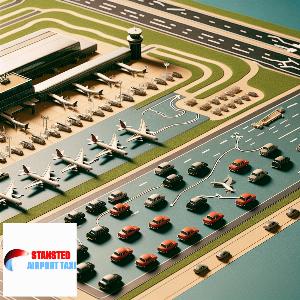
Stansted Airport: A Guide to the Redeployment Process
Stansted Airport's redeployment process is a strategic approach to optimize staff efficiency. It involves reassigning personnel to different roles or departments, based on their skills and the airp ...

Stansted Airport: A Guide to the Deboarding Process
Stansted Airport ensures a smooth deboarding process for passengers. Clear signage guides you to immigration, baggage claim, and customs. Services like car rentals, hotels, and public transport are ...

The Impact of Airline Optimization on Stansted Airport
Airline optimization at Stansted Airport has significantly improved operational efficiency. Enhanced scheduling, route planning, and load management have reduced delays, increased passenger satisfa ...

The Role of Stansted Airport in Renewable Energy Utilization
Stansted Airport plays a pivotal role in renewable energy utilization, pioneering in sustainable practices. It harnesses solar power for operations, reducing carbon emissions significantly. This co ...

The Role of Stansted Airport in Conflict Resolution
Stansted Airport plays a crucial role in conflict resolution by facilitating diplomatic travels. It serves as a neutral meeting ground for international negotiations, aiding in the peaceful resolut ...
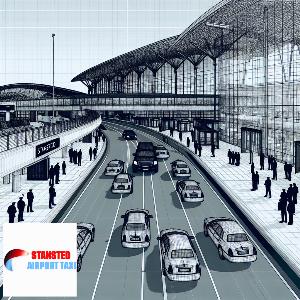
The Role of Stansted Airport in Crisis Management
Stansted Airport plays a crucial role in crisis management, providing emergency response and logistical support. Its strategic location and robust infrastructure make it a vital hub for coordinatin ...
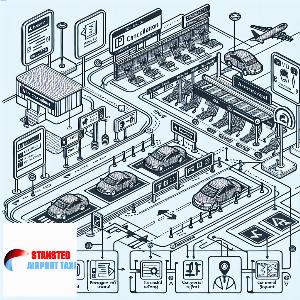
Stansted Airport: A Guide to the Cancellation Process
Navigating Stansted Airport's cancellation process can be daunting. It's crucial to understand the terms and conditions of your ticket, contact your airline promptly, and inquire about possible ref ...

The Role of Stansted Airport in Sustainable Transport
Stansted Airport plays a crucial role in sustainable transport, promoting eco-friendly practices. It encourages airlines to use modern, fuel-efficient aircrafts, supports public transport use for p ...

The Impact of Airline Diversification on Stansted Airport
Airline diversification at Stansted Airport has significantly boosted its growth and competitiveness. The introduction of various airlines has expanded route networks, increased passenger traffic, ...

The Impact of Airline Evolution on Stansted Airport
The evolution of airlines has significantly impacted Stansted Airport, fostering its growth into a major hub. Enhanced technology, increased flight frequency, and diversified routes have attracted ...
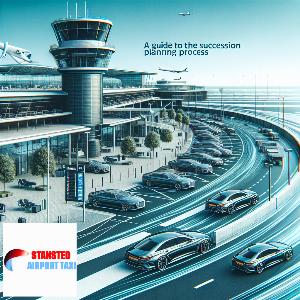
Stansted Airport: A Guide to the Succession Planning Process
Stansted Airport's succession planning process is a strategic approach ensuring leadership continuity. It identifies and develops potential leaders, preparing them for future roles, thus securing t ...

Stansted Airport: A Guide to the Employee Engagement Process
Stansted Airport prioritizes employee engagement, fostering a positive work environment. The process involves regular communication, feedback sessions, and team-building activities. This approach e ...

The Impact of Airline Rationalization on Stansted Airport
Airline rationalization has significantly impacted Stansted Airport, leading to increased efficiency but also heightened competition. This has resulted in streamlined operations, yet also necessita ...

The Role of Stansted Airport in Diplomatic Relations
Stansted Airport plays a crucial role in diplomatic relations, serving as a gateway for international diplomats. Its strategic location and world-class facilities facilitate diplomatic travel, fost ...

The Role of Stansted Airport in Eco-Tourism
Stansted Airport plays a pivotal role in eco-tourism, promoting sustainable travel by implementing green initiatives. It reduces carbon emissions, encourages recycling, and supports local biodivers ...

Stansted Airport: A Guide to the Crisis Management Process
Stansted Airport's crisis management process is a well-structured system, designed to handle emergencies effectively. It involves swift decision-making, clear communication, and efficient coordinat ...
Blogs Pages
The Role of Stansted Airport in Carbon Offset Projects

Blog about The Role of Stansted Airport in Carbon Offset Projects...
The Role of Stansted Airport in Wildlife Conservation

Blog about The Role of Stansted Airport in Wildlife Conservation...
The Role of Stansted Airport in Humanitarian Aid
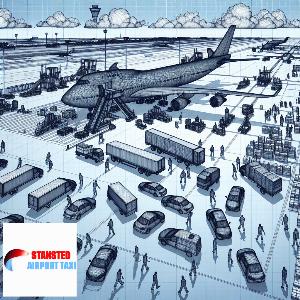
Blog about The Role of Stansted Airport in Humanitarian Aid...
Stansted AirportA Guide to the Baggage Policies

Blog about Stansted AirportA Guide to the Baggage Policies...
The Impact of Airline Accidents on Stansted Airport

Blog about The Impact of Airline Accidents on Stansted Airport...
Stansted AirportA Guide for Disabled Passengers

Blog about Stansted AirportA Guide for Disabled Passengers...
The Role of Stansted Airport in Eco-Friendly Practices
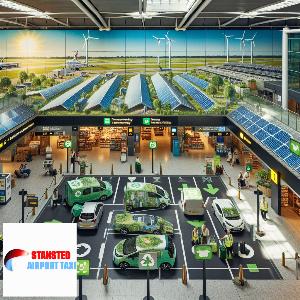
Blog about The Role of Stansted Airport in Eco-Friendly Practices...
The Role of Stansted Airport in Wildlife Protection
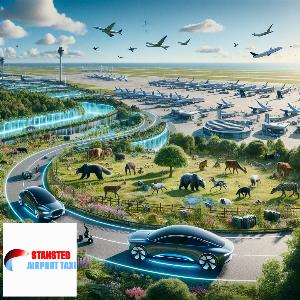
Blog about The Role of Stansted Airport in Wildlife Protection...
Stansted Airport: A Guide to the Reservation Process

Blog about Stansted Airport: A Guide to the Reservation Process...
Stansted AirportA Guide to the Customs Process
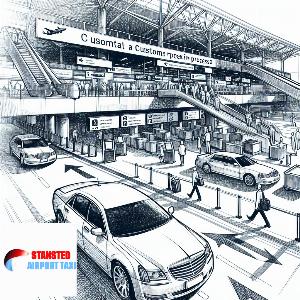
Blog about Stansted AirportA Guide to the Customs Process...



